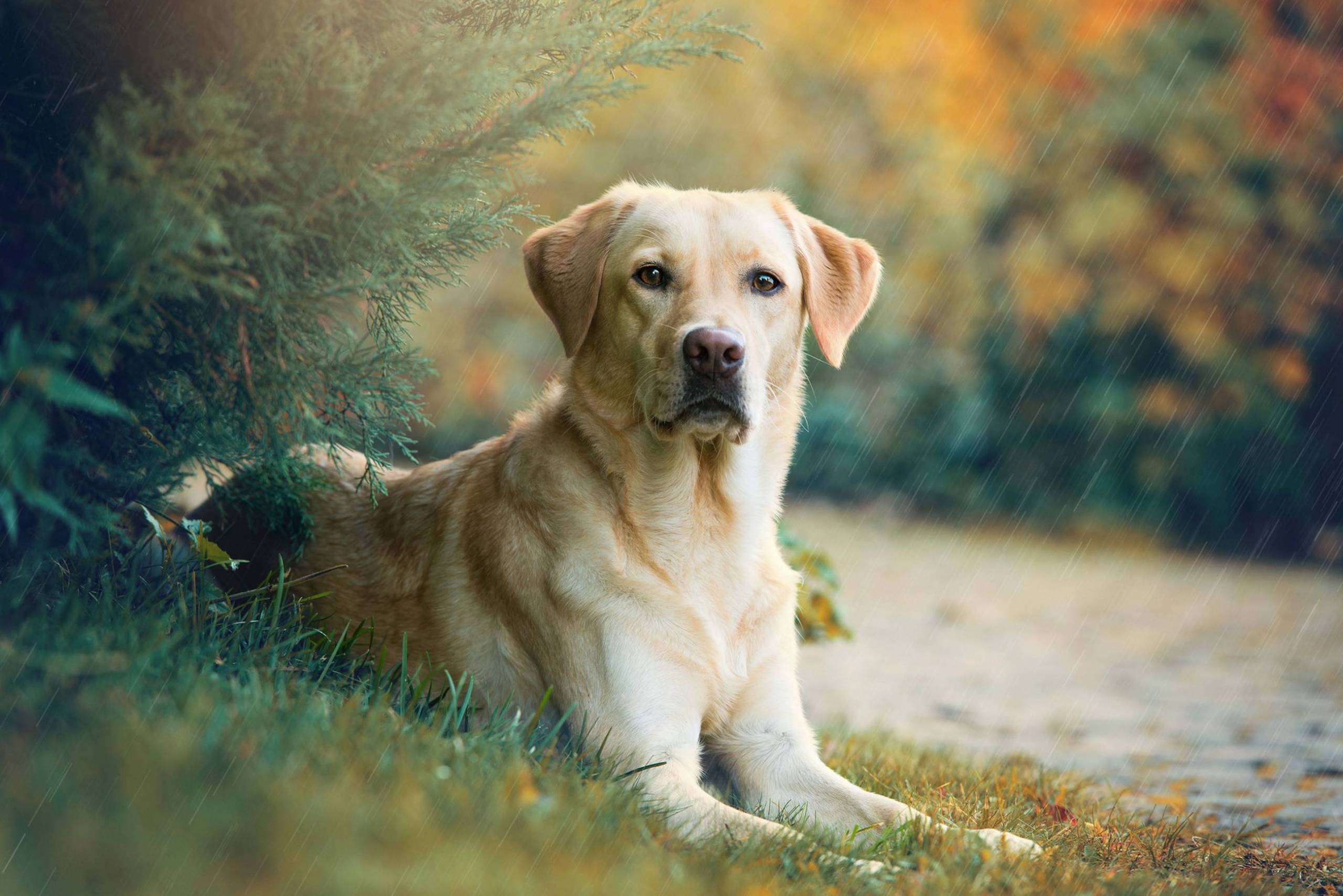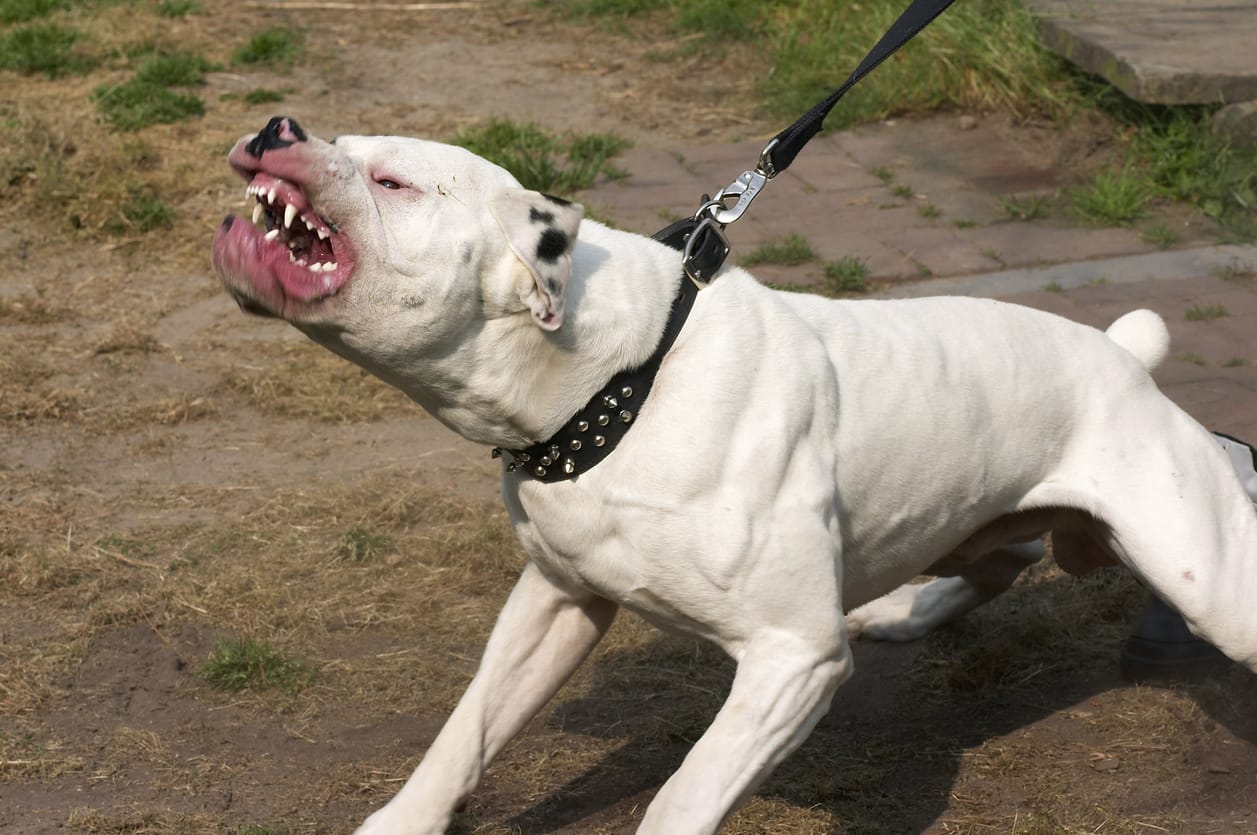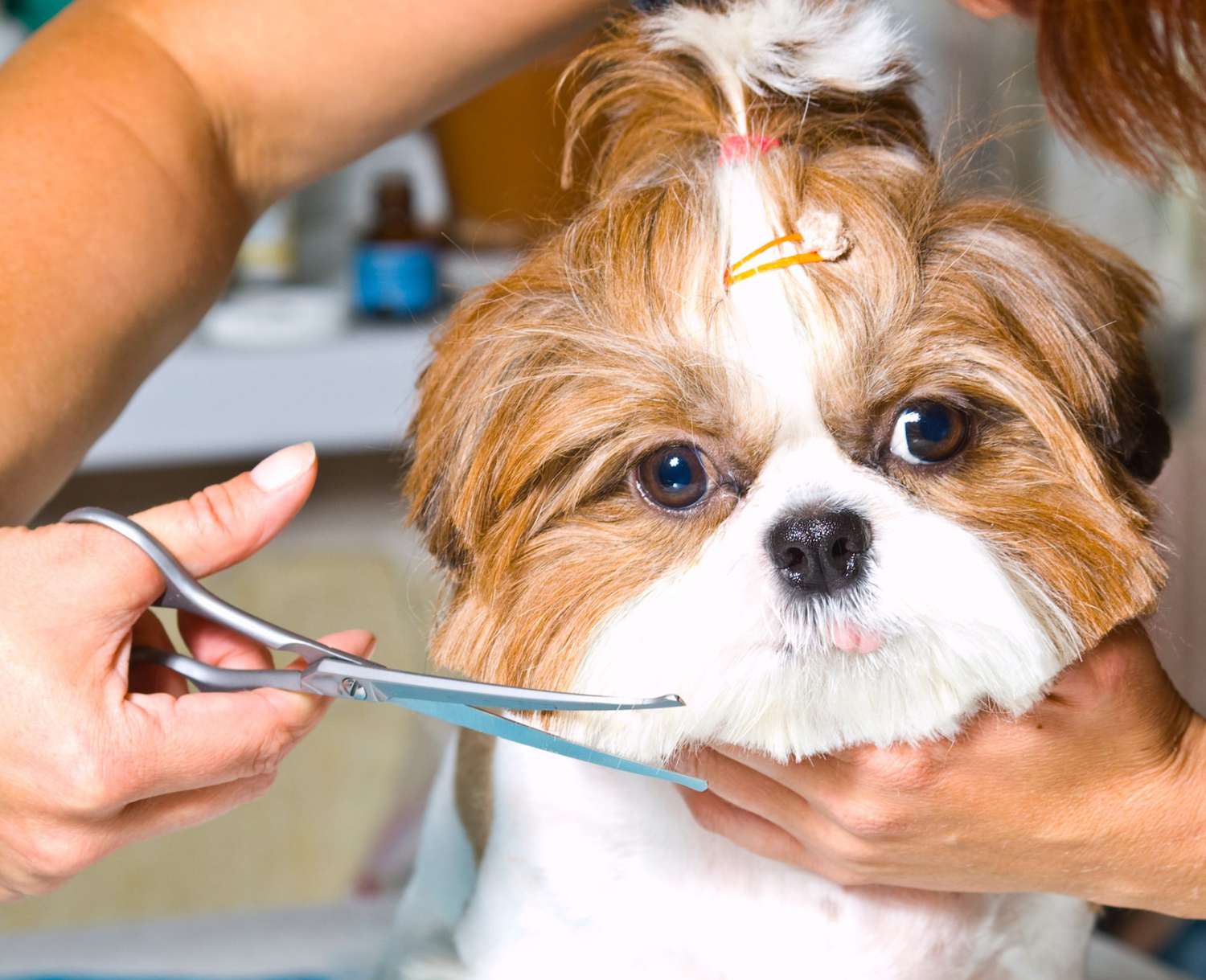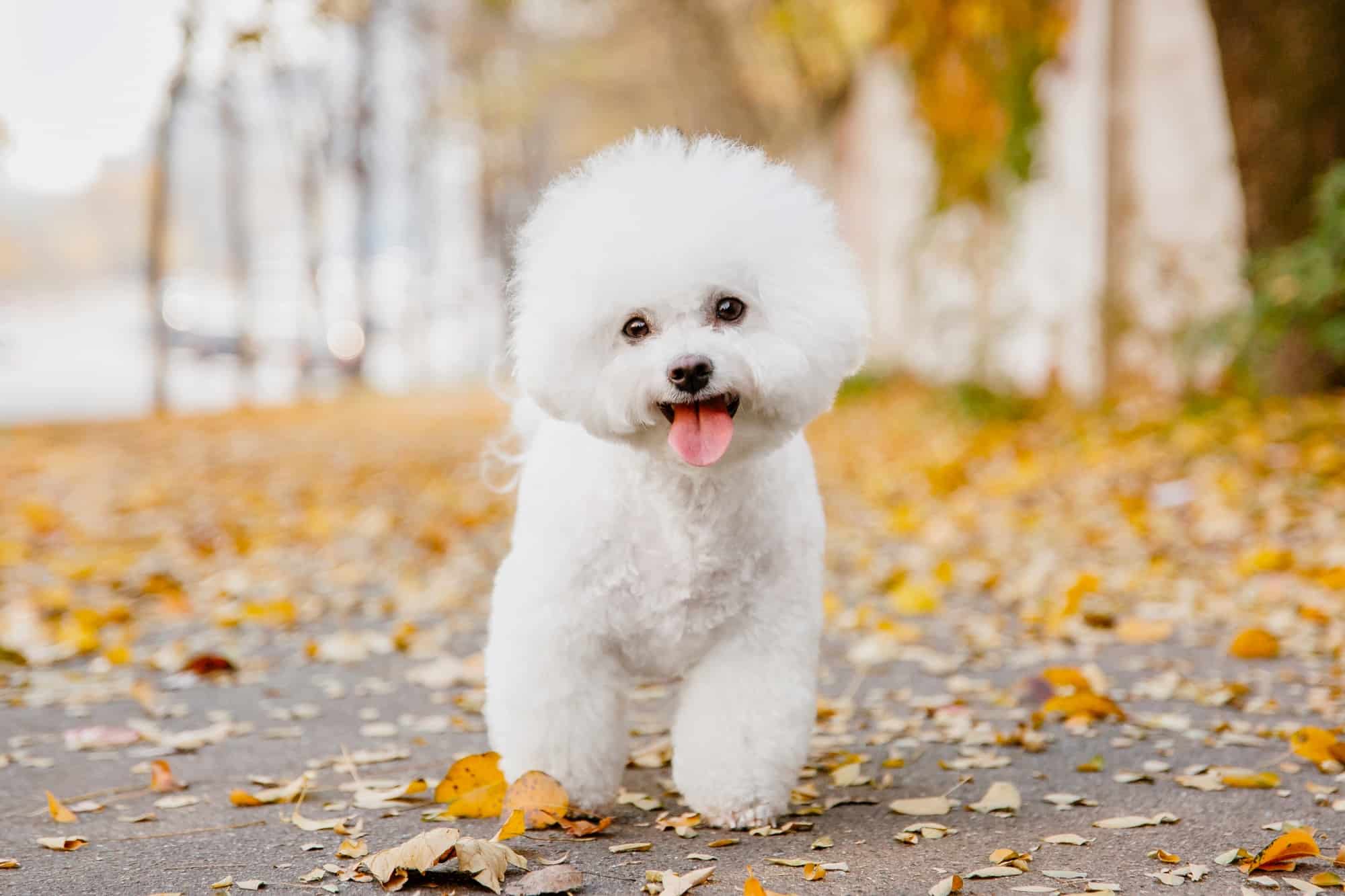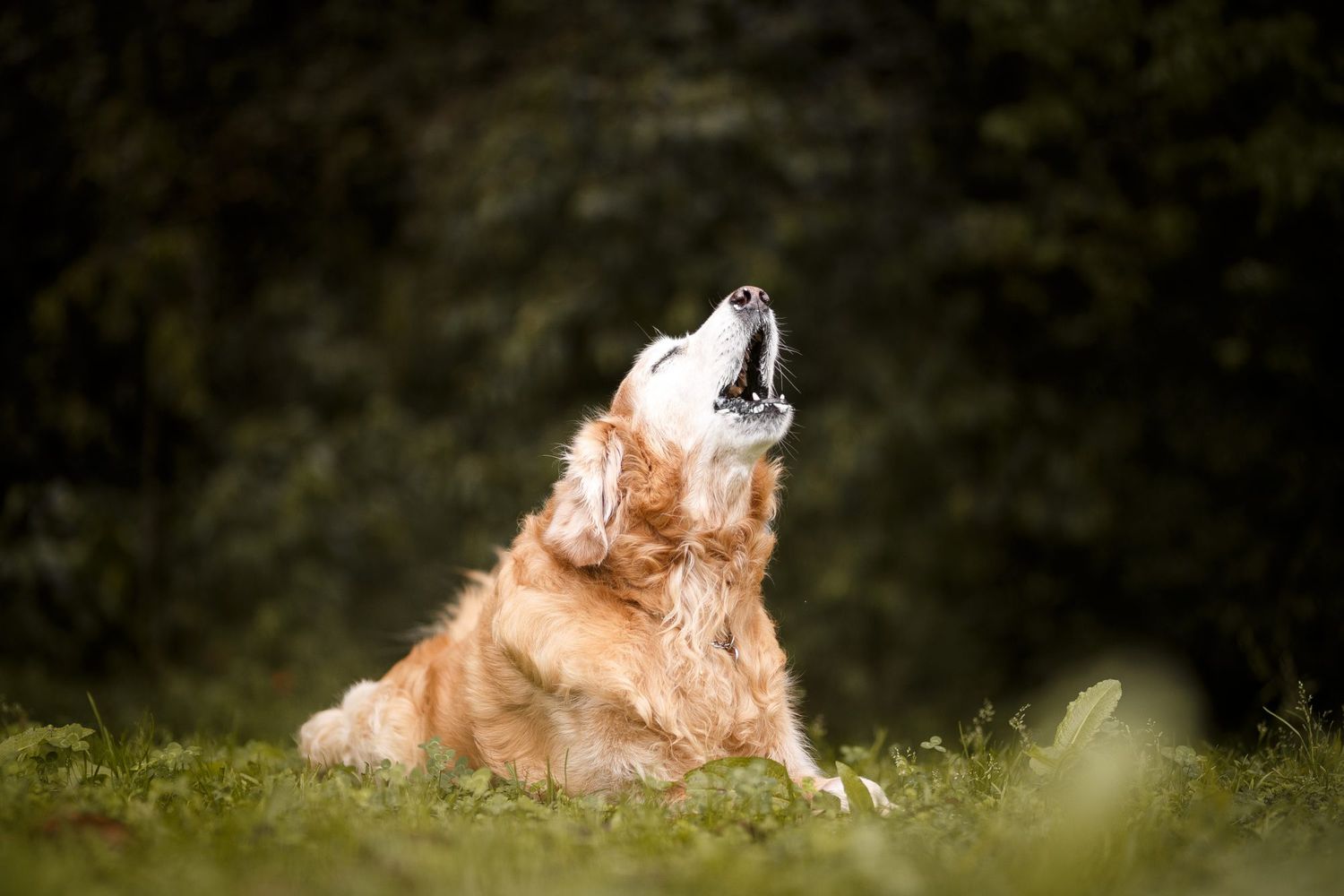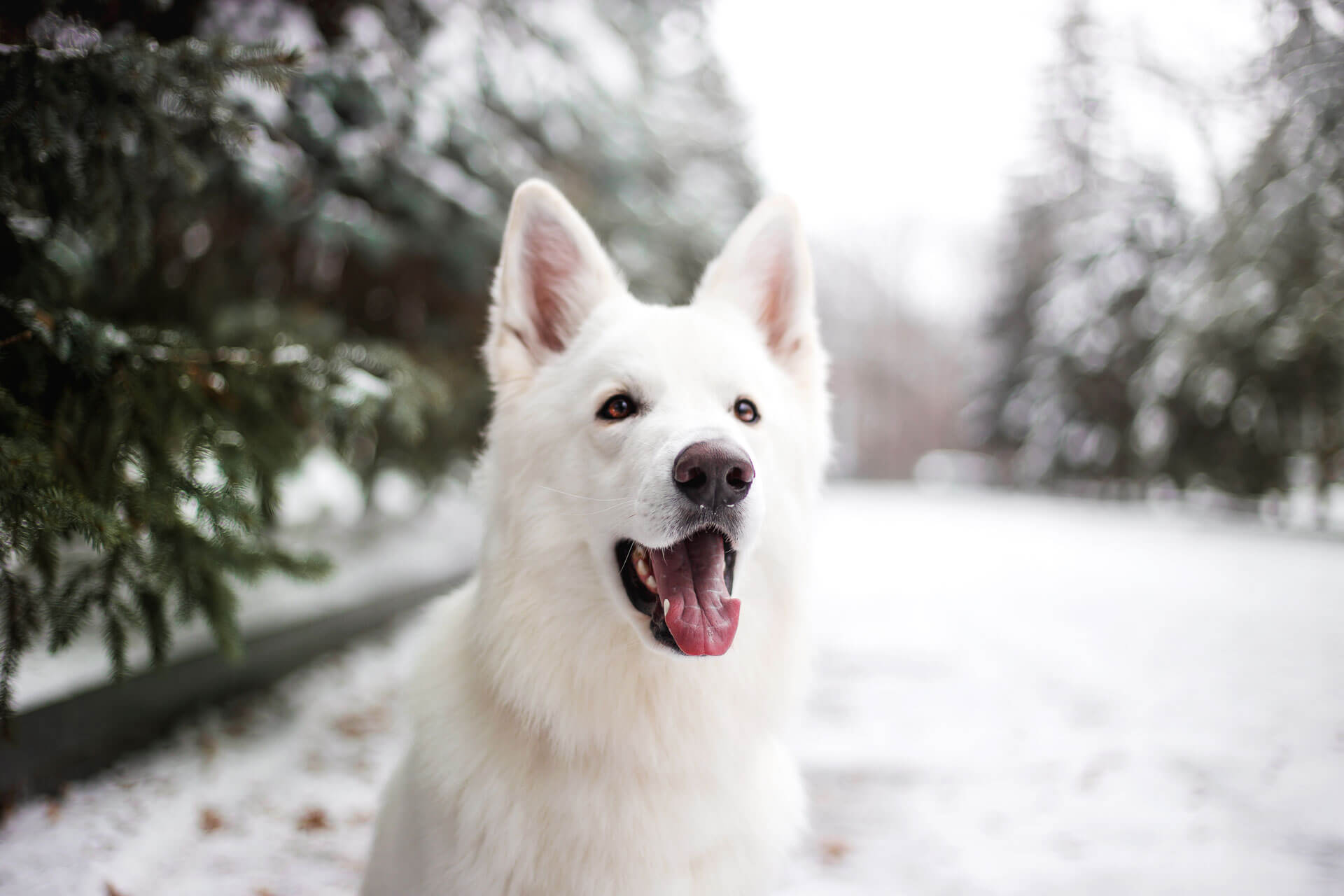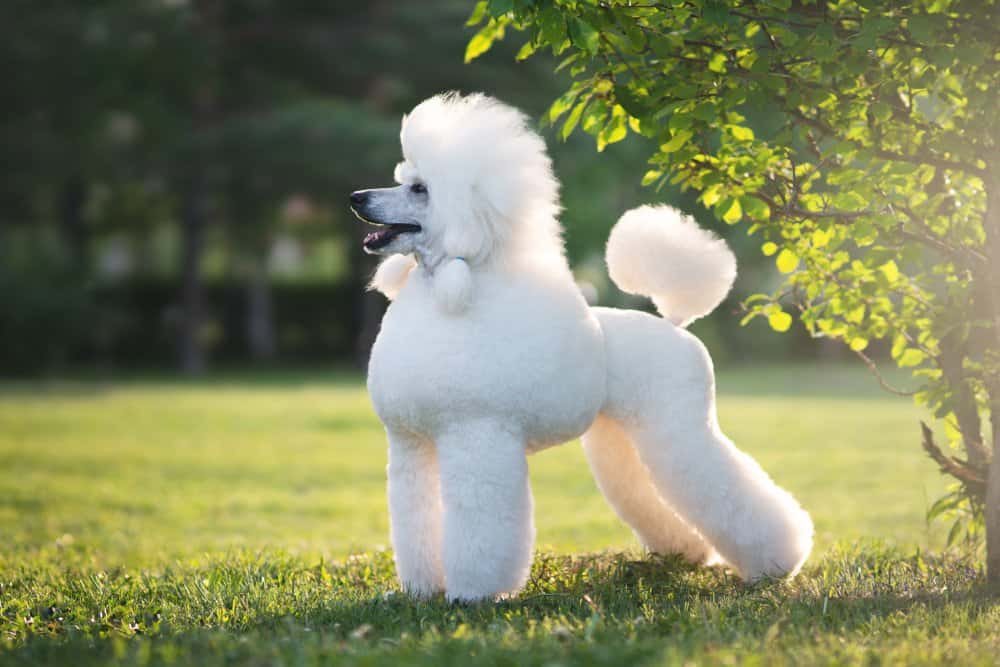Huskies are a type of working dog that were originally bred in Siberia for hunting and transportation purposes. They are known for their thick fur coats, which keep them warm in even the coldest climates, and their strong will and endurance for pulling sleds. While the Siberian Husky is the most recognized Husky breed, there are many different types of Huskies.
In this article, we will explore the fascinating world of Husky dogs and delve into their unique characteristics. We will discuss the different types of Huskies, their origins, and their distinct traits and appearances.
You are reading: 10 Types Of Husky Dogs
Whether you are a dog enthusiast or considering getting a Husky as a pet, this article will provide valuable information about these majestic breeds.
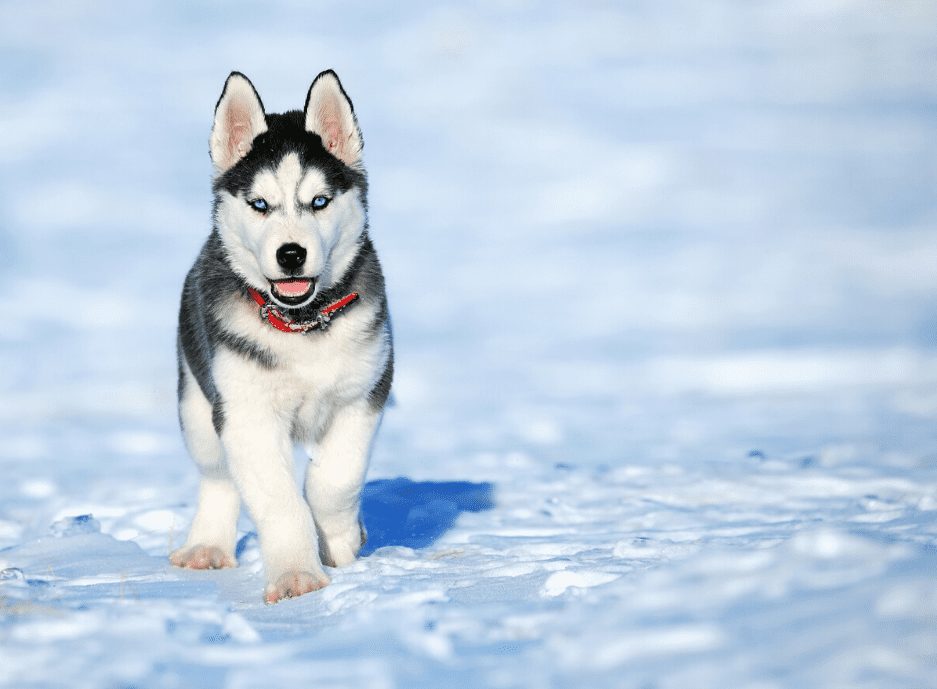
10 Types Of Husky Dogs
Siberian Husky
The Siberian Husky is a medium-sized dog breed that originated in Siberia. They are known for their thick double coat, which comes in a variety of colors, and their striking blue or multi-colored eyes.
Siberian Huskies are friendly, intelligent, and independent dogs that require firm and gentle training from puppyhood. They are pack animals and thrive in human company, making them very social dogs.
Siberian Huskies are also known for their playful and mischievous nature, which can sometimes make them challenging for first-time dog owners. They are high-energy dogs that require regular exercise and mental stimulation to prevent boredom and unwanted behaviors.
Siberian Huskies are pack animals, so they need to be part of a family or group. They are very social dogs, and they love to be around people. Siberian Huskies are also very intelligent, and they enjoy learning new things. The breed is recognized by the American Kennel Club and is classified as a working dog.
Alaskan Malamute
The Alaskan Malamute is a large, powerful dog breed that originated in Alaska. They are known for their incredible strength, endurance, and unwavering loyalty. The breed has a thick double coat that provides insulation against freezing temperatures and comes in various colors, including shades of gray, black, white, and copper.
Initially bred to pull heavy sleds over extended distances, this breed assisted in hauling supplies and transportation tasks. This strong work ethic remains intrinsic, making regular exercise and mental stimulation vital to their well-being.
Alaskan Malamutes are known for their loyalty, affection, and playful nature, but they might not suit everyone due to their size, energy, and challenging training requirements.
Alaskan Husky
The Alaskan Husky is a sled dog breed that belongs to the spitz family. They are known for their endurance and strength, making them excellent sled dogs and companions. The breed is not recognized by the American Kennel Club, and there is no standard for their appearance or temperament.
Alaskan Huskies come in various colors and sizes, and their coat is usually shorter and less dense than other Husky breeds. They are highly energetic and require regular exercise and mental stimulation to prevent boredom and destructive behavior.
Alaskan Huskies are loyal and affectionate dogs that make great family pets, but they require experienced owners who can provide them with the training and socialization they need.
Samoyed
The Samoyed is a breed of medium-sized herding dogs with thick, white, double-layer coats. They are spitz-type dogs that take their name from the Samoyedic peoples of Siberia. The breed is known for its friendly, gentle, and playful personality.
Samoyeds are built for herding and working in extremely cold climates, and they are direct descendants of the Reindeer Spitz from Russia. They are powerful working dogs that do not tire easily and are most known for pulling sleds, herding, agility, and hunting.
Read more : Why Does My Dog Choke After Drinking Water?
Samoyed dogs are most often white, and can have a brown tint to their double-layer coat, which is naturally dirt-repellent. They are known to be used in expeditions in both Arctic and Antarctic regions and have a friendly and agreeable disposition.
Samoyeds have a very thick, two-layer hair coat that consists of a long straight-haired topcoat and a dense soft undercoat. They are medium- to large-sized dogs (35-65 pounds) with a confident stance, triangular, thick, rounded ears, curved mouth corners that appear to create a smile but were actually bred to prevent icicle buildup, a deep chest, strong, long hind legs, and a fluffy curled tail that rests on their back.
Samoyeds have a friendly, playful, alert temperament and can make a great companion and family dog.
Chinook
The Chinook is a breed of sled dog that was developed in the state of New Hampshire during the early 20th century. The breed is known for its intelligence, endurance, and eagerness to please.
Chinooks are versatile dogs that excel in various activities such as hiking, agility competitions, and sledding. They are medium-sized dogs that stand 21 to 27 inches (53 to 69 cm) in height at the withers and weigh 45 to 90 pounds (20 to 41 kg).
The Chinook has a balanced and muscular build, and its coat is medium-length and dense, ranging in color from light honey to reddish-gold. The breed is characterized by its calm and people-oriented personality, making it an excellent companion for families.
Chinooks are rare breeds and can vary greatly in size, but the average size is 23 to 25 inches tall and approximately 60 to 80 pounds. They are intelligent, loyal, and adaptable dogs that require regular exercise and mental stimulation to maintain their physical and mental fitness.
Labrador Husky
The Labrador Husky is a breed of dog that was developed in Canada as a sled and companion dog. Despite its name, it is not a mix between a Labrador Retriever and a Siberian Husky, but a distinct, purebred dog native to coastal Labrador.
The breed is known for its friendly and gentle nature, forming strong bonds with their family and being kind and gentle with children. Labrador Huskies are intelligent, confident, and require regular exercise and mental engagement to prevent boredom. They have a dense double coat that requires frequent brushing to keep it at its best, and they shed copiously and continuously.
The breed has a moderate lifespan of 10 to 13 years. Labrador Huskies are born to work, so a daily walk and an outdoor yard where they can patrol and exercise are essential for their well-being.
When grooming, it’s important to check their coat for any parasites or injuries, and use this opportunity to check out their ears for signs of inflammation or infection. Like most dogs, their teeth require brushing at least three times a week, and their toenails may need clipping. Labrador Huskies often suffer from bloat, hip dysplasia, and other health issues.
Greenland Dog

The Greenland Dog is a large breed of husky-type dog that is kept as a sled dog. Here are some key characteristics of the breed:
Appearance:
– The Greenland Dog has a broad, wedge-shaped head and triangular pointed ears.
– They have a thick, stand-off outer coat and dense under wool.
– The breed has a thick, bushy tail that they carry in a curve or sickle shape.
– They are slightly taller than the Canadian Eskimo Sleddog and not as heavy.
Temperament:
– The Greenland Dog is known for its physical strength and endurance, with a tireless and bold mentality.
– They are generally quiet and reserved, though friendly towards people.
– The breed is independent, high-energy, and stubborn.
– They are demanding yet sociable dogs.
Health:
– The breed is considered nationally and culturally important to Greenland, and efforts are made to safeguard its purity.
– In western Greenland north of the Arctic Circle and the entirety of eastern Greenland, it is illegal to import any dog from outside (except for police and assistance dogs with a special permit), and since 2017 all dogs have to be microchipped and registered in the Greenland dog.
– The breed is prone to hip dysplasia and other health issues.
Overall, the Greenland Dog is a hardworking and independent breed that requires an experienced owner who can provide them with the training and exercise they need to thrive.
Canadian Eskimo Dog
The Canadian Eskimo Dog, also known as the Canadian Inuit Dog or qimmiq, is a breed of working dog from the Arctic. Here are some key characteristics of the breed:
Appearance:
– The Canadian Eskimo Dog is a large breed, weighing between 66 and 95 pounds (30 to 43 kilograms).
– They have a thick, dense coat that comes in various colors, including white, black, and gray.
– Males range from 58-70 cm in height at the withers, while females range from 50-60 cm.
Temperament:
– The breed is known for its strength, endurance, and ability to withstand frigid temperatures.
– They are loyal, alert, and very fond of their family.
– Canadian Eskimo Dogs are intelligent and trainable, but they have a stubborn streak and require a firm and consistent hand in training.
Health:
– The breed is threatened with extinction, with a 2008 estimate of only 300 purebred dogs.
– Contributing factors to the breed’s decline include the increasing popularity of snowmobiles for transportation and the spread of infectious canine diseases.
– Canadian Eskimo Dogs are prone to certain health issues, including hip dysplasia and eye problems.
Overall, the Canadian Eskimo Dog is a hardy and loyal breed that requires an experienced owner who can provide them with the training and exercise they need to thrive. They are a rare breed that is threatened with extinction, so it’s important to support efforts to preserve the breed and its unique heritage.
Miniature Siberian Husky
Read more : How Many Bones Does A Dog Have?
The Miniature Siberian Husky is a smaller version of the Siberian Husky breed. Here are some key characteristics of the breed:
Appearance:
– Miniature Huskies stand up to 17 inches tall and weigh no more than 35 pounds.
– They resemble standard Siberian Huskies but are just in a smaller size.
– They come in a variety of colors, including black and white, grey and white, and red and white.
Temperament:
– Miniature Huskies have the same temperament and attention span as standard Siberian Huskies.
– They are friendly, intelligent, and independent dogs that require firm and gentle training from puppyhood.
– They are high-energy dogs that require regular exercise and mental stimulation to prevent boredom and unwanted behaviors.
Health:
– Miniature Huskies are not an official breed, but rather a small husky-type dog that may result from crossbreeding between a Siberian or Alaskan husky and another small species, such as a Pomeranian or Shiba Inu.
– There is no standard for their appearance or temperament.
– It’s important to research the breeder and ensure that the dog is healthy and well-cared for before adopting a Miniature Husky.
Overall, the Miniature Siberian Husky is a smaller version of the Siberian Husky breed that requires an experienced owner who can provide them with the training and exercise they need to thrive. They are high-energy dogs that require regular exercise and mental stimulation to prevent boredom and unwanted behaviors.
It’s important to research the breeder and ensure that the dog is healthy and well-cared for before adopting a Miniature Husky.
American Eskimo Dog
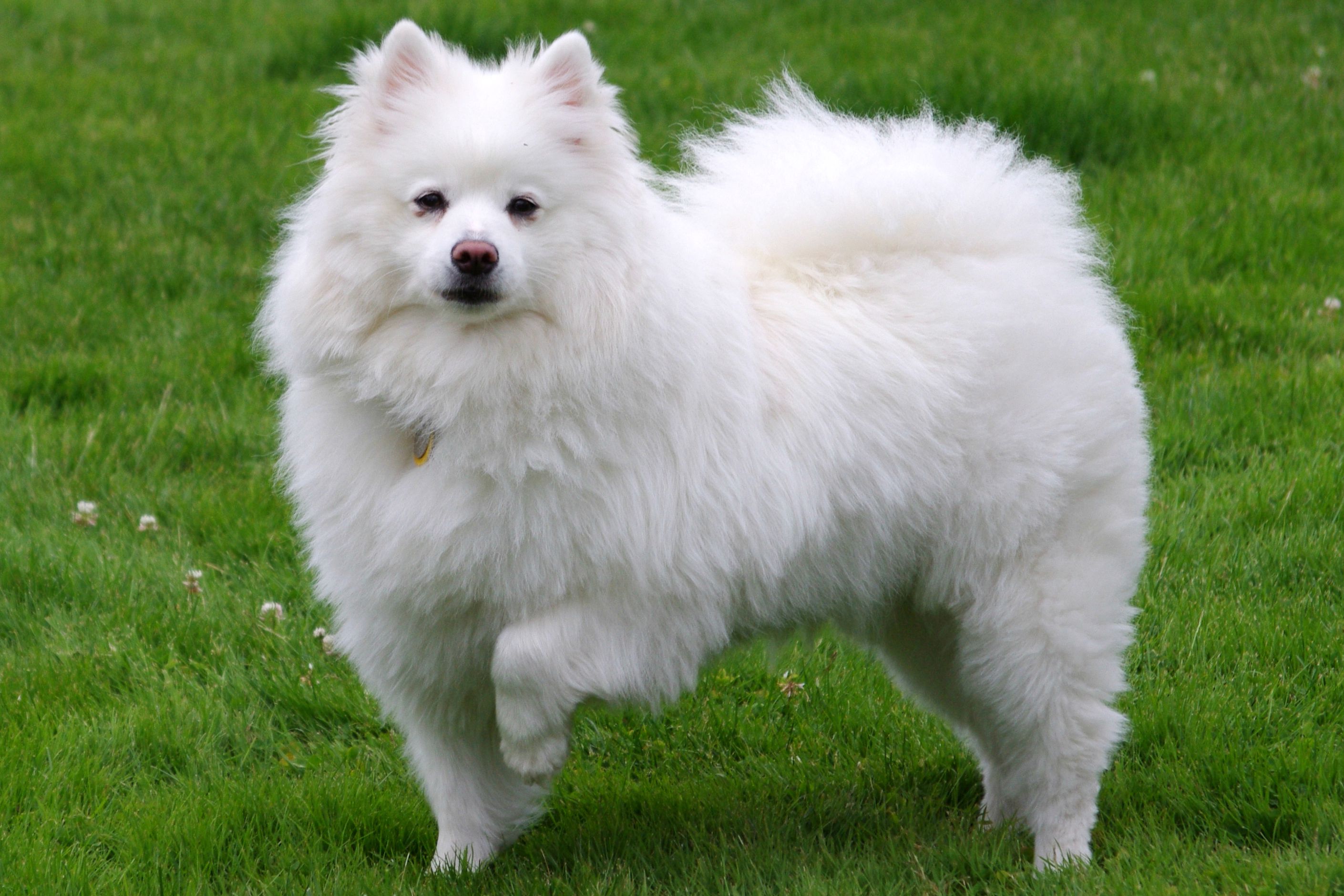
The American Eskimo Dog is a breed of dog that originated in the United States. Here are some key characteristics of the breed:
Appearance:
– The American Eskimo Dog comes in three sizes: toy, miniature, and standard.
– They have a thick, glossy double coat that is always white, or white with biscuit or cream markings.
– The breed has erect, triangular-shaped ears, and a heavily plumed tail curled over the back.
Temperament:
– The American Eskimo Dog is an affectionate, loving dog that is excellent with children.
– They are intelligent, alert, and friendly, but can be reserved and protective with strangers.
– The breed is highly trainable and excels in obedience and agility activities.
Health:
– The American Eskimo Dog is generally a healthy breed, but they are prone to certain health issues, including hip dysplasia and progressive retinal atrophy.
– They require regular exercise and mental stimulation to prevent boredom and unwanted behaviors.
Overall, the American Eskimo Dog is a beautiful and intelligent breed that requires an experienced owner who can provide them with the training and exercise they need to thrive.
They are highly trainable and excel in obedience and agility activities. The breed is generally healthy, but it’s important to be aware of potential health issues and provide regular veterinary care.
FAQS
1. What are the different types of Husky dogs?
There are many different types of Husky dogs, including the Siberian Husky, Alaskan Malamute, Alaskan Husky, Samoyed, Chinook, Labrador Husky, Greenland Dog, Canadian Eskimo Dog, Miniature Siberian Husky, and American Eskimo Dog.
2. What is the difference between a Siberian Husky and an Alaskan Malamute?
Siberian Huskies are smaller and more agile than Alaskan Malamutes, which are larger and more powerful. Siberian Huskies have a finer coat and are more suited to running long distances, while Alaskan Malamutes have a thicker coat and are better suited to pulling heavy loads.
3. Are Huskies good family pets?
Yes, Huskies can make great family pets. They are friendly, loyal, and affectionate dogs that love to be around people. However, they require regular exercise and mental stimulation to prevent boredom and unwanted behaviors.
4. Are Huskies good with children?
Yes, Huskies are generally good with children. They are friendly and playful dogs that enjoy the company of people, including children. However, as with any dog, it’s important to supervise interactions between children and dogs to prevent accidents.
5. Do Huskies shed a lot?
Yes, Huskies shed a lot. They have a thick double coat that sheds heavily twice a year, and they also shed moderately throughout the year. Regular grooming and brushing can help manage shedding.
6. Are Huskies difficult to train?
Huskies can be difficult to train due to their independent nature and high energy levels. They require firm and gentle training from puppyhood and regular exercise and mental stimulation to prevent boredom and unwanted behaviors.
7. Are Huskies good apartment dogs?
Huskies are not ideal apartment dogs due to their high energy levels and need for regular exercise and mental stimulation. They require a lot of space to run and play, and they can become destructive if they don’t get enough exercise.
8. Are Huskies good with other pets?
Huskies can be good with other pets if they are socialized from a young age. However, they have a strong prey drive and may chase smaller animals, so it’s important to supervise interactions between Huskies and other pets.
9. Do Huskies have health problems?
Huskies can be prone to certain health problems, including hip dysplasia, eye problems, and bloat. It’s important to provide regular veterinary care and monitor their health closely.
10. Are Huskies good guard dogs?
Huskies are not typically good guard dogs, as they are friendly and sociable with people. They may bark to alert their owners of strangers, but they are not aggressive or territorial dogs.
Source: https://petstutorial.com
Category: DOGS


